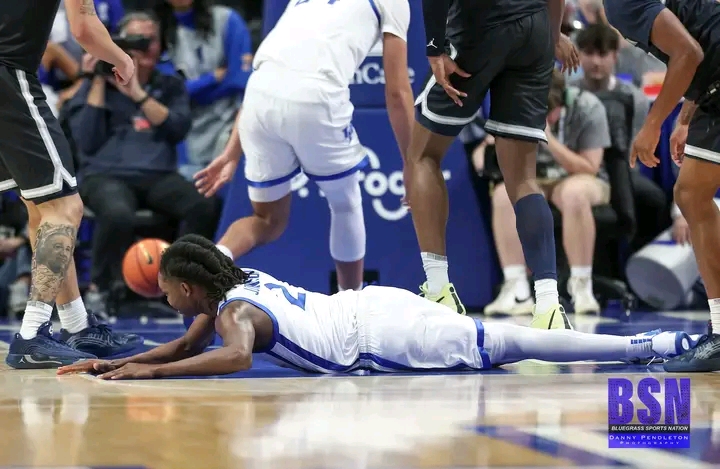Just days after Kentucky’s electric win over No. 1 Purdue had fans dreaming of a Final Four run, the Wildcats came crashing back to earth. Georgetown walked into Rupp Arena and stunned the Big Blue Nation with an 84–70 exhibition win — one that exposed cracks beneath Kentucky’s early-season confidence.
For head coach Mark Pope, the result wasn’t just a loss. It was a loud, humbling reminder that his new-look roster still has a lot to learn.
“Really, really disappointing night for me… on this sacred, hallowed court,” Pope said after the game. “But this is a really important night for us to get better. So many teams are going to play us with this exact same game plan.”
The numbers told the story
Kentucky’s offensive rhythm — so sharp against Purdue — vanished against Georgetown. The Wildcats shot just 33.3% from the field and went 0-for-13 from three-point range in the second half. What made it worse? The ball movement that fueled their earlier success disappeared.
Instead of crisp passing and spacing, Kentucky’s offense devolved into one-on-one play. With both of its top point guards sidelined, the team finished with 15 turnovers to only 14 assists — a stat line that perfectly summed up the dysfunction Pope saw.
“That’s the last thing I’ll evaluate — the missed shots,” Pope said. “We’ll shoot the ball well. What really bothered me was the dysfunctionality. We didn’t manage the game the way we should have. We left a lot on the table in terms of making plays for teammates.”
Georgetown’s game plan worked to perfection
The Hoyas didn’t just show up — they showed a blueprint. Georgetown’s “Aggie switch” defensive scheme frustrated Kentucky all night, cutting off driving lanes and forcing bad perimeter looks.
“They were in an Aggie switch defensively, which we had talked about, but we hadn’t really practiced it,” Pope admitted. “We never got good at working to the second side. We were hesitant to make that first cut.”
For those unfamiliar, the Aggie switch is a defensive tactic that pushes the ball handler into a help defender positioned to draw a charge or trap in the lane. It demands quick passing and patience to beat — neither of which Kentucky executed.
The loss that might actually help
For fans, the loss was a gut punch. But for Pope, it might be the exact kind of setback that shapes his team’s identity.
“This game matters — even if it doesn’t count,” he said.
Exhibition or not, Kentucky needed this kind of wake-up call. Against Purdue, they saw how good they could be at their best. Against Georgetown, they saw how quickly things can unravel when execution slips.
Pope’s message was clear: the talent is there, but chemistry and discipline must catch up fast. And if the Wildcats take this lesson to heart, that October night in Rupp might end up being the moment that fueled their growth — not defined their flaws.
Sometimes, reality checks hurt. But they also build champions. And that’s the truth behind the Georgetown shock.

